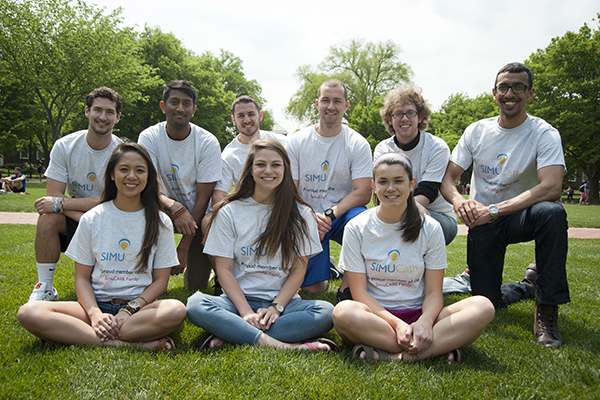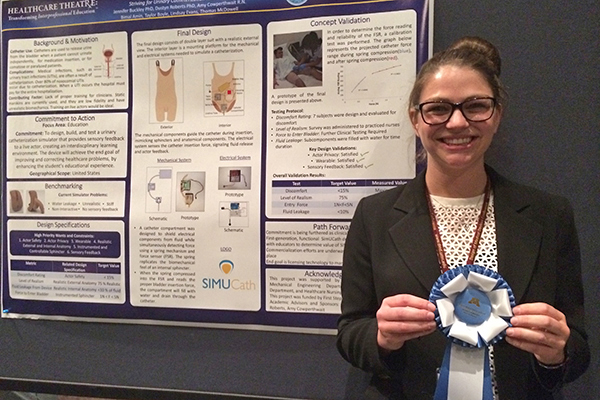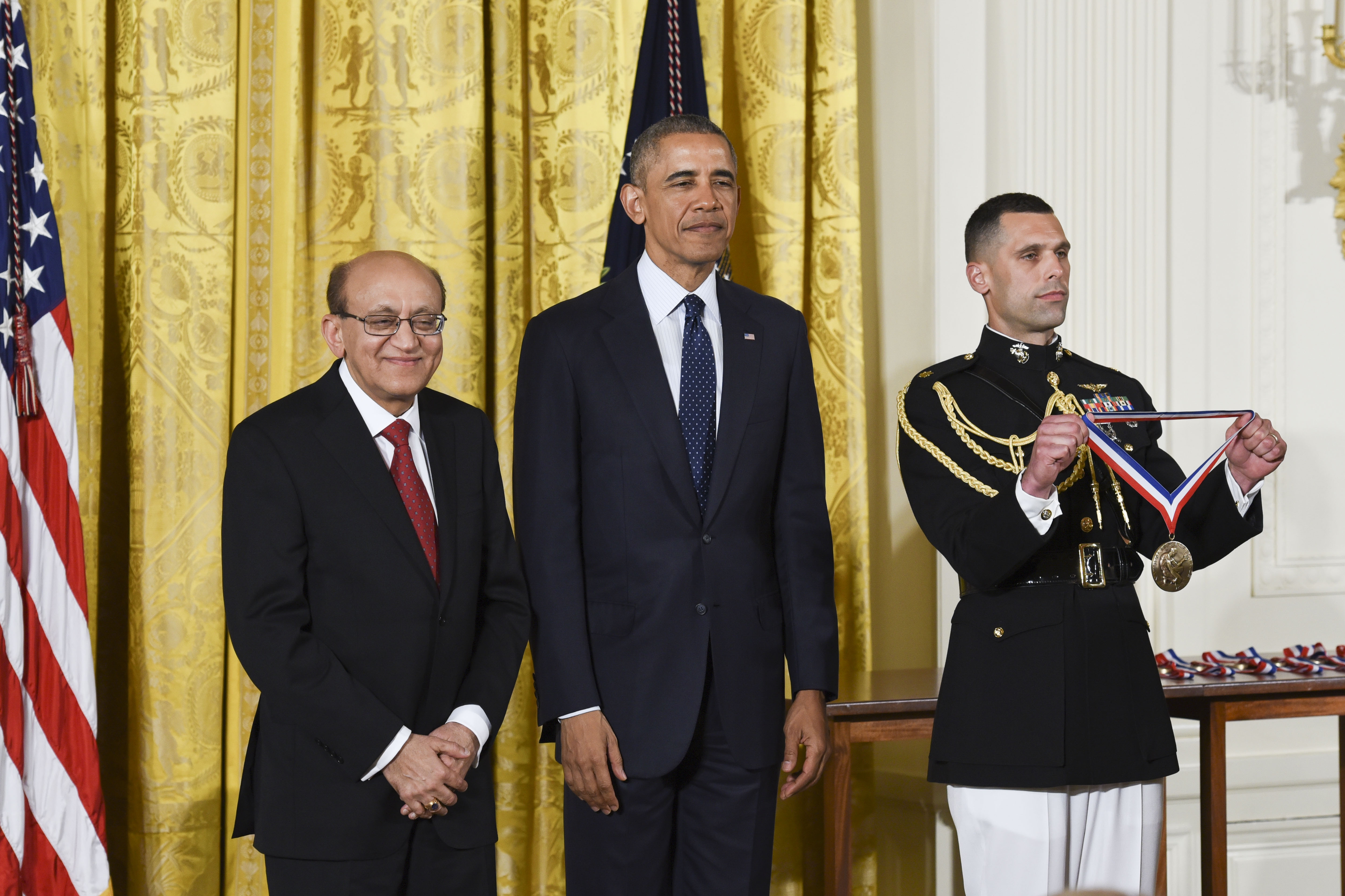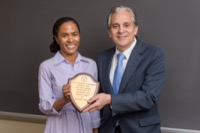


A winning simulation
UD student team takes first place at national medical devices competition
10:25 a.m., May 11, 2015--An interdisciplinary team of students from the University of Delaware recently took first place at the 14th annual Design of Medical Devices Conference. Held at the University of Minnesota from April 13-16, the event is the world’s largest medical device conference.
The team won for SimuCath, a novel wearable technology that allows health care professionals to practice urinary catheterizations on live actors. The device is part of a growing family of wearable technology used in medical scenarios that enable nursing students and other future health care professionals to learn invasive procedures in a realistic environment without compromising the safety of the “patient.”
Honors Stories
National Medal of Science
Warren Award
The devices are used in an innovative program called Healthcare Theatre, which was initially developed by nursing instructor Amy Cowperthwait and theatre professor Allan Carlsen. Engineering and business students and faculty have since collaborated with the Healthcare Theatre team to develop and market the devices.
“These high-fidelity simulations provide an opportunity for the health care providers to assess their technique and communication skills in challenging situations,” Carlsen says.
Taylor Boyle, a senior mechanical engineering major, presented the project at the conference in Minnesota.
“It was an amazing experience to have students from Harvard and Yale, which took second and third place, come up to me and tell me how great our project is,” she says. “This was a medical conference so it wasn’t just about the competition — it was about trying to solve problems that will improve health and health care delivery, and it was great to have Delaware be a part of that.”
According to Amy Bucha, who serves as the engineering liaison for the College of Health Sciences, a summer intern will soon begin work on a new prototype. The team is also planning to create a female version of the device. The current form is for male patients.
Boyle also represented the team at the eighth annual Clinton Global Initiative University (CGI U), which took place from March 6-8 at the University of Miami in Coral Gables, Florida. At that meeting, more than 1,000 innovative student leaders made commitments to action in CGI U’s five focus areas: education, environment and climate change, peace and human rights, poverty alleviation, and public health.
In addition, SimUCath took second place at First Step, a College of Health Sciences program launched in 2013 to foster innovative student solutions to challenging health issues.
About the device suite
Other simulation devices currently being developed at UD include SimUThor, which guides post-operative chest tube assessment and care; SimUShock, a defibrillation simulation; SimUStick, which teaches proper intravenous needle insertion; SimUTrach, which teaches proper tracheostomy care and suctioning, and SimUCPR, for practicing CPR.
All of the devices are wearable, with sensory feedback built in for the actors playing the role of patients.
About the winning team
The interdisciplinary senior design team that won first place at the Design of Medical Devices Conference included Bimal Amin (biomedical engineering), Taylor Boyle (mechanical engineering), Lindsay Evans (mechanical engineering), Cassy Galon (fashion and apparel studies) and Wes McDowell (biomedical engineering).
The students were advised by Amy Cowperthwait (nursing), Dustyn Roberts (mechanical engineering), Amy Bucha (nursing and mechanical engineering), and Jenni Buckley (mechanical engineering).
About Healthcare Theatre
Healthcare Theatre was created at the University of Delaware in 2009 as a partnership between the School of Nursing and the Department of Theatre to help health care professionals develop psychosocial skills through interactive scenarios presented by simulated performers.
In 2013, Healthcare Theater partnered with the UD College of Engineering and Alfred Lerner College of Business and Economics to create simulation devices that allow actors to represent hospitalized patients requiring invasive procedures.
Student engineers contribute to device design and development, and business students help with marketing efforts. Nursing and theatre students work on research and product testing.
The program now includes four colleges at UD: Engineering, Health Sciences, Arts and Sciences, and the Alfred Lerner College of Business and Economics.
With this transformative approach to education, health sciences students can practice both technical and interpersonal skills in a safe environment without compromising quality of care.
About the conference
The 14th annual Design of Medical Devices Conference was held on the University of Minnesota Twin Cities Campus from April 13-16.
The conference brings together world-class medical device designers, researchers, manufacturers, and the public sector to share perspectives and innovations in medical device design.
Article by Diane Kukich
Photo by Wenbo Fan and courtesy of the team









